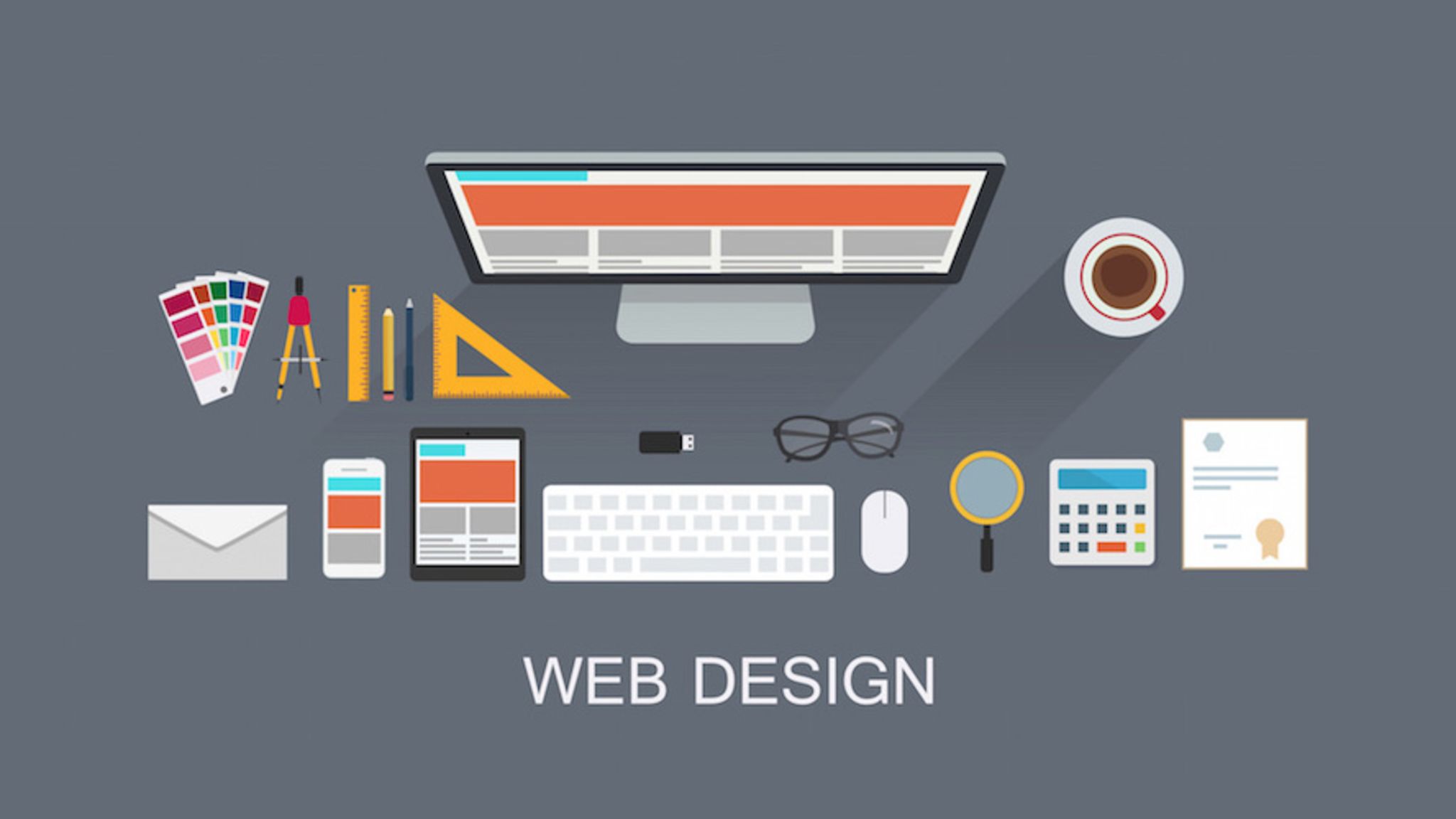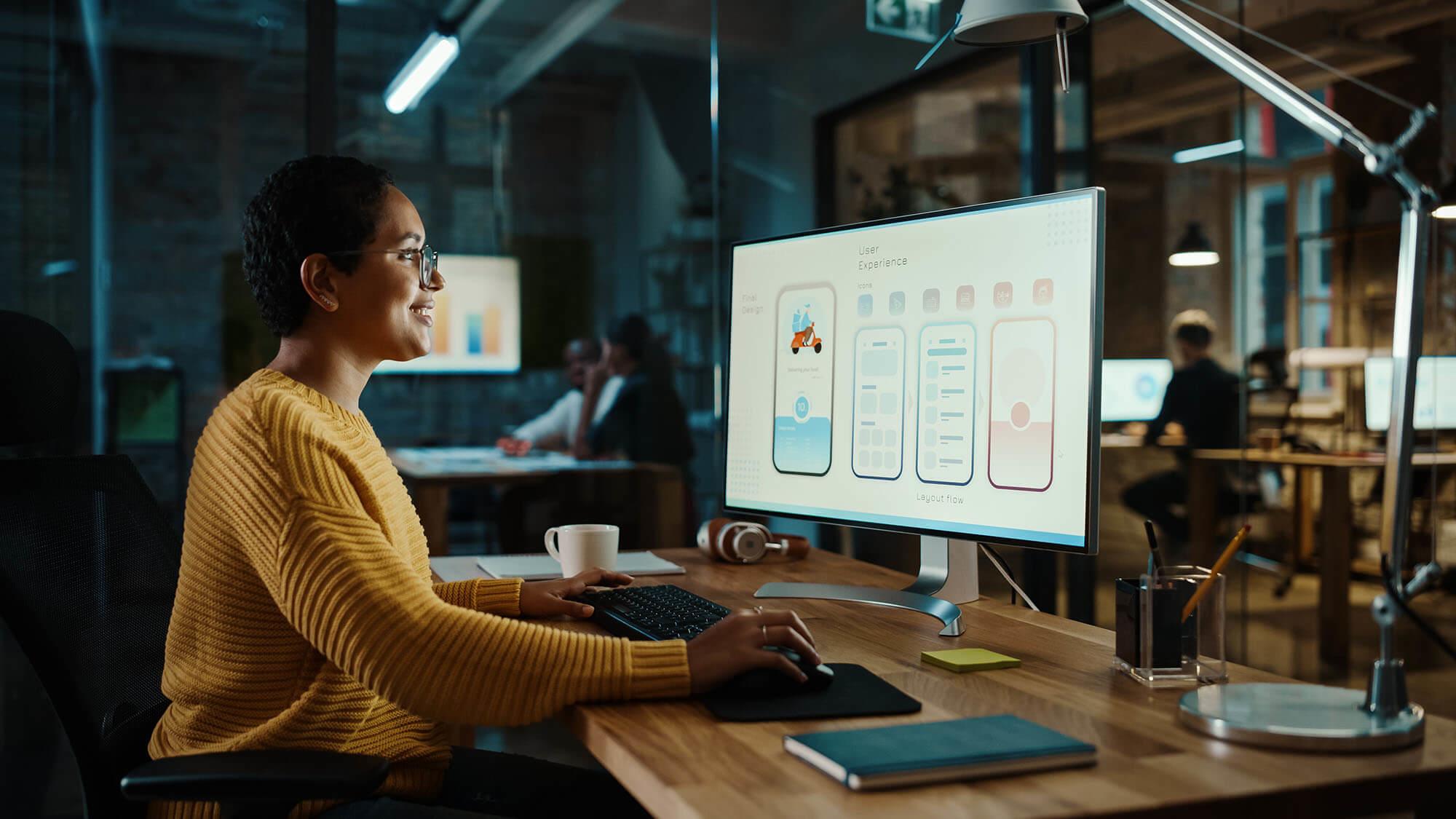Key Trends in Modern Web Style That Every Designer Need To Know
In the quickly progressing landscape of website design, numerous vital trends have actually emerged that are important for designers to understand in order to remain affordable. A minimalistic layout strategy is gaining grip, emphasizing simpleness while boosting customer experience via rapid load times and accessibility. Mobile-first techniques and the recent integration of dark mode alternatives are reshaping just how customers communicate with electronic content. As these patterns remain to advance, comprehending their ramifications will verify crucial for efficient style. What exists ahead in this dynamic field might redefine the standards of user involvement and performance.

Minimalistic Layout Method
The minimalistic layout approach has emerged as a specifying pattern in modern-day internet style, characterized by its focus on simplicity and functionality. This design ideology advocates for the decrease of components to their necessary types, permitting a cleaner and more intuitive user experience - Web design in Penang. By getting rid of unnecessary interruptions, minimalism helps with more clear communication of material, making certain that users can browse sites effortlessly
One of the main benefits of minimalistic design is its capability to boost load times and overall web site efficiency. Less graphical aspects and structured coding lead to quicker web page display screens, which is essential in preserving site visitor engagement. Additionally, this technique cultivates a feeling of elegance and professionalism, often straightening with brand name worths that prioritize quality and performance.
Additionally, minimalistic design is inherently versatile throughout various gadgets and screen dimensions, making certain uniformity in individual experience. The emphasis on typography and whitespace develops an aesthetically appealing design that guides individuals in the direction of vital activities, such as phone call to activity or crucial details.
Emphasis on Availability
Acknowledging the varied demands of customers, modern internet design significantly stresses access as an essential concept. This shift is driven by the understanding that websites should be usable by people with differing abilities, including those with aesthetic, acoustic, motor, and cognitive disabilities. Guaranteeing accessibility not only aligns with ethical considerations yet additionally expands the potential target market for internet material.
Key techniques in improving accessibility include making use of semantic HTML, which gives meaningful context to assistive modern technologies, and the execution of ARIA (Accessible Rich Net Applications) roles to boost navigation for users reliant on screen viewers. Shade contrast, text size, and receptive design elements also play substantial duties in making material a lot more accessible.
Furthermore, including keyboard navigation choices enables customers with flexibility problems to connect with web interfaces effortlessly. Regular ease of access audits and user screening with individuals with impairments can better fine-tune layout selections and determine possible obstacles.
Ultimately, prioritizing availability not just fulfills legal requirements but likewise fosters an inclusive electronic environment, boosting the general customer experience while reinforcing the brand name's commitment to social duty.
Mobile-First Methods
As accessibility comes to be a fundamental aspect of web layout, the concentrate on mobile-first strategies has actually obtained importance. This strategy focuses on the webpage mobile user experience, ensuring that internet sites are made for smaller sized displays and touch interactions prior to adapting to larger display screens. Given the considerable increase in mobile phone usage for browsing, applying mobile-first strategies is vital for reaching a more comprehensive audience properly.
Mobile-first layout motivates programmers to create structured, efficient formats that fill promptly and operate flawlessly on mobile phones. This entails focusing on necessary features and material, decreasing unneeded aspects that might interfere with customer experience. By embracing a mobile-first attitude, developers can improve site efficiency, as lots of design concepts and optimizations for smart phones convert well to desktop settings.
In addition, online search engine significantly favor mobile-optimized websites in their ranking algorithms, making mobile-first design not only an ideal technique yet also a crucial aspect for internet search engine presence - Web design in Penang. By embracing this method, programmers can develop comprehensive, straightforward internet sites that provide to diverse target markets, inevitably leading to greater engagement and fulfillment across all systems. In an electronic landscape where mobile use continues to rise, prioritizing mobile-first layout is both a calculated and required technique
Dark Setting Assimilation
Lots of users value the choice of dark mode in modern internet layout, try these out as it not only improves aesthetic charm however likewise enhances readability in low-light atmospheres. This layout fad has actually gotten traction, driven mostly by user demand and the boosting understanding of eye strain related to extended exposure to intense displays.
Dark setting combination allows developers to develop aesthetically striking interfaces while preserving functionality. By employing a darker color combination, designers can reduce glow and lessen tiredness, which is particularly useful for individuals who invest expanded periods on their devices. Dark setting can extend battery life on OLED screens, an included advantage for mobile users.
When applying dark setting, programmers must make certain that color contrasts are maximized to maintain readability. Trick aspects such as text, icons, and interactive parts have to be clearly distinct versus darker histories. It is additionally essential to offer individuals with the capability to toggle in between light and dark settings flawlessly, satisfying private preferences and environmental contexts.

Dynamic Content Experiences
In the world of modern-day web design, vibrant web content experiences have actually become a transformative technique that enhances individual involvement and communication. By leveraging real-time information and individual actions, web sites can supply individualized web content customized to private preferences and needs (Web design in Penang). This check here versatility not only boosts individual satisfaction yet additionally drives greater conversion rates
Dynamic web content can take numerous forms, such as individualized product recommendations, location-based information, and contextually appropriate short articles. Technologies like AJAX and server-side scripting enable smooth updates without needing a complete web page reload, making certain a smoother customer experience. Additionally, the combination of expert system and artificial intelligence further improves these experiences by examining customer communications and adjusting material appropriately.
The implementation of dynamic content experiences likewise offers chances for A/B screening and efficiency optimization. By continually evaluating individual information, developers can make informed changes to maximize interaction and retention. As customers significantly expect customized experiences, embracing dynamic web content will be crucial for developers aiming to develop internet sites that resonate with their audience. In summary, vibrant web content experiences stand for a significant fad in modern-day website design, shaping the future of electronic communication and customer contentment.

Final Thought
Finally, the landscape of modern web layout is formed by a number of crucial trends that boost user experience and involvement. A minimalistic layout method prioritizes capability, while ease of access ensures that diverse customer demands are satisfied. Mobile-first techniques and dark mode integration deal with varying device usages and environments. Dynamic material experiences driven by real-time information create individualized interactions that dramatically increase involvement and conversions. Adherence to these trends is vital for effective website design in today's electronic environment.